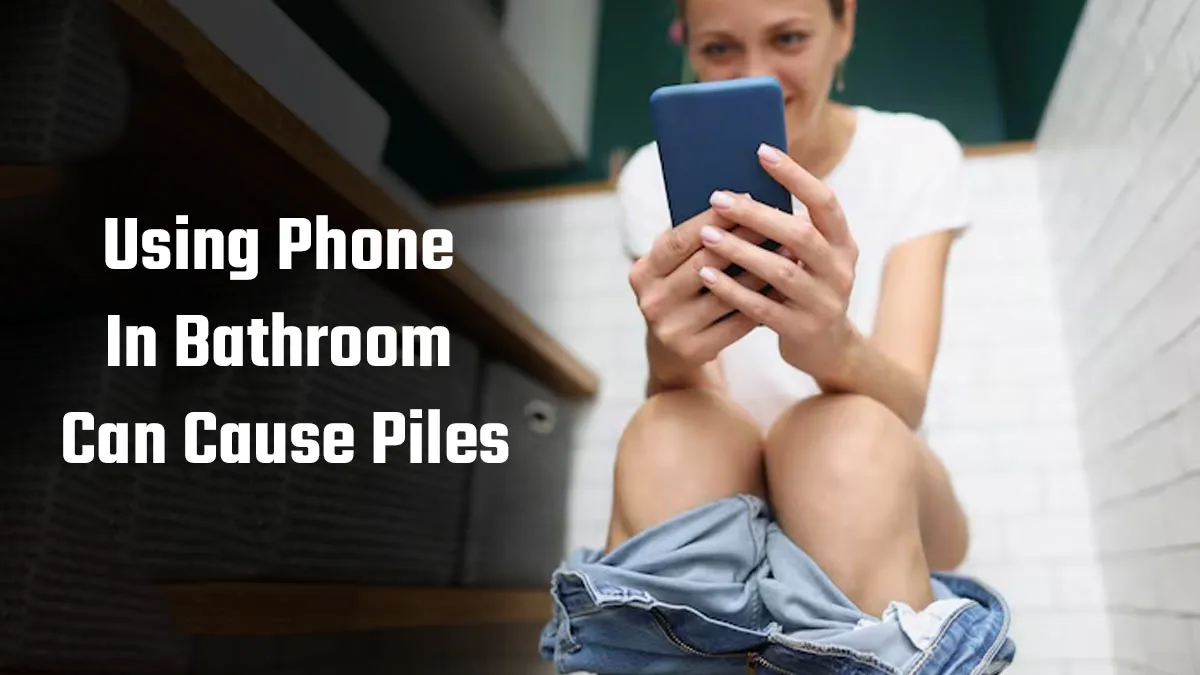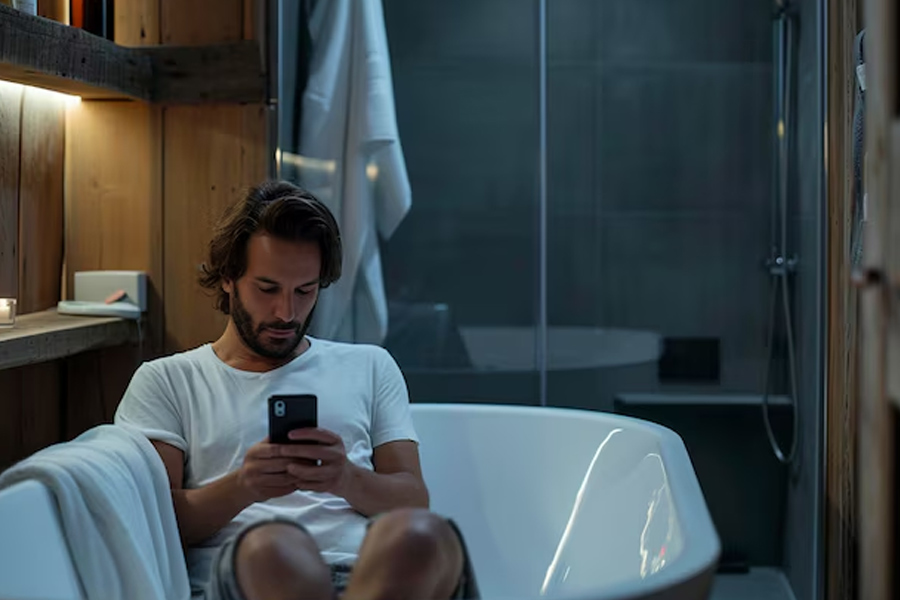
We’ve all done it—scrolled through social media, replied to messages, or watched videos while sitting on the toilet. But could this seemingly harmless habit be secretly harming your health? Recent concerns suggest that using phones in the washroom might contribute to a painful condition: piles (hemorrhoids). Prolonged bathroom sessions strain the rectal area, while unsanitary phone screens expose users to harmful bacteria. But is there a direct link? Let’s explore the science, expert opinions, and practical tips to protect your health.
Table of Content:-
The Hidden Danger of Prolonged Bathroom Time
View this post on Instagram
Spending too long on the toilet is a key risk factor for piles. When you sit for extended periods, gravity increases pressure on the veins in your rectum, causing them to swell. Vishnu Saraf, Co-Founder - Possible, Bangalore, warns: “We easily spend half an hour in the toilet while watching our mobile, which puts increased strain on the rectal area. Ideally, we shouldn’t spend more than 10 minutes.”
How It Triggers Piles:
- Prolonged sitting weakens rectal tissues.
- Straining during bowel movements worsens vein swelling.
- Poor posture (like leaning forward) disrupts natural bowel function.
Studies show that nearly 50% of people develop piles before age 50—a statistic Saraf calls “alarming.”
ALSO READ: What Is Coffee Enema? Expert Explains Viral This Colon Cleanse Trend
Your Phone’s Dirty Secret: Germs Worse Than a Toilet Seat

Beyond physical strain, your phone might be a bacterial hotspot. A 2022 study in the Journal of Applied Microbiology found that mobile screens often harbor 10 times more germs than toilet seats, including dangerous bacteria like E. coli and Staphylococcus. These microbes thrive on warm, frequently touched surfaces—like your phone.
Saraf highlights this risk: “An average mobile screen is dirtier than a toilet seat. It’s not just about piles—touching your face after using a phone in the washroom can spread infections.”
Risks of Contaminated Phones:
- Stomach infections from E. coli.
- Skin irritations or acne.
- Cross-contamination of surfaces at home.
Why 10 Minutes is the Magic Number
Doctors recommend limiting toilet time to 5–10 minutes. Sitting longer than this relaxes the anal muscles, disrupts blood flow, and increases hemorrhoid risk. Saraf explains, “The longer you sit, the more pressure builds up. It’s like over-inflating a balloon—eventually, it bursts.”
Tips for Healthier Bathroom Habits:
- Set a timer: Avoid getting distracted by your phone.
- Stay hydrated: Helps prevent constipation and straining.
- Add fiber to meals: Promotes smoother bowel movements.
- Exercise daily: Improves digestion and blood circulation.
Breaking the Phone-Toilet Cycle
-1742473736857.jpg)
Quitting the phone-in-washroom habit isn’t easy, but small changes can make a difference. Start by:
- Leaving your phone outside the bathroom.
- Using a physical book or magazine if you need distraction.
- Practicing mindfulness to avoid 'doomscrolling.'
Saraf urges, “Let’s make toilets a phone-free zone. Share this pledge with everyone who uses phones in the washroom—it’s a step toward better health.”
When to See a Doctor
While occasional twinges are normal, persistent symptoms like bleeding, itching, or lumps near the anus need medical attention. Early treatment can prevent complications like chronic pain or infections.
ALSO READ: What Is Heart Age? Expert Explains Psychological and Chronological Differences
Conclusion
Using your phone in the washroom might seem harmless, but it combines two risks: prolonged rectal strain and exposure to harmful bacteria. By limiting toilet time to 10 minutes, prioritizing hygiene, and ditching the phone habit, you can reduce your risk of piles and infections. Remember, your health is worth more than a few extra minutes of scrolling!
Also watch this video
How we keep this article up to date:
We work with experts and keep a close eye on the latest in health and wellness. Whenever there is a new research or helpful information, we update our articles with accurate and useful advice.
Current Version